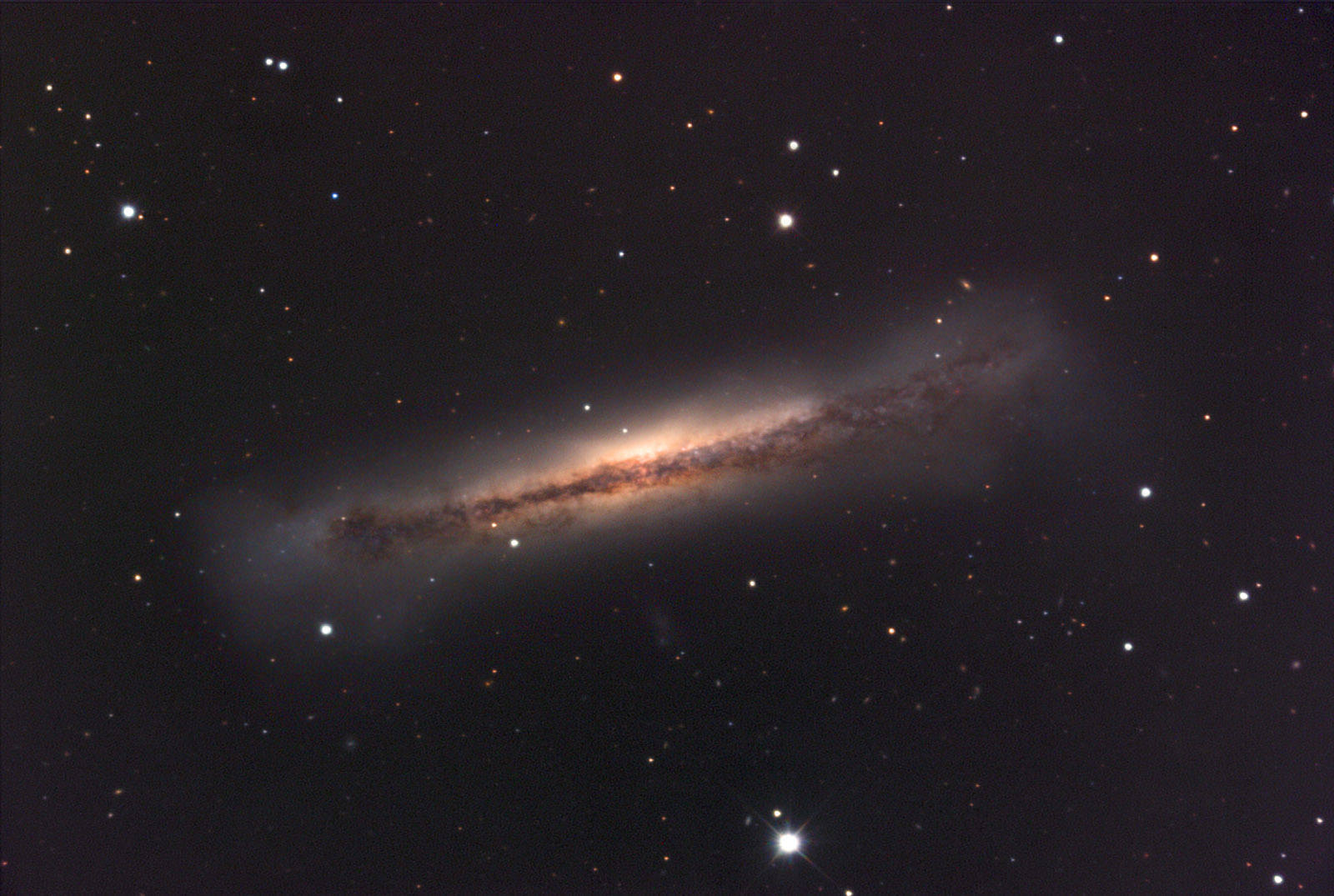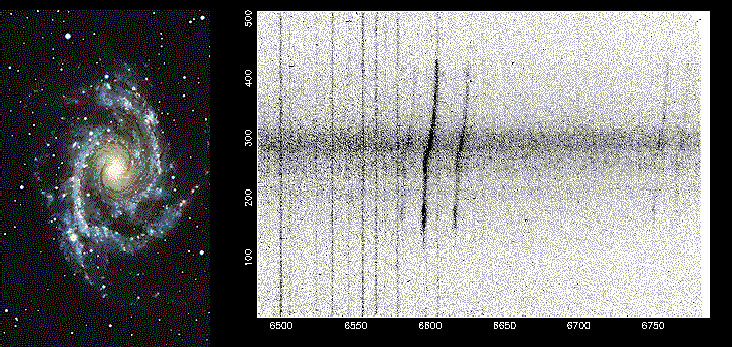Nice picture, and a very interesting trio of galaxies.
NGC 3628. Photo: Jim Misti/Rob Gendler.
Let's start with the galaxy that Messier didn't spot, NGC 3628. Its shape is interesting not only because of the way the disk flares out at both ends, which is extremely unusual, but also because of the
long, faint tidal tail that can just be seen in today's APOD. It appears to originate at the "bottom end" of the disk in the APOD and curve down and slightly to the left.
Another interesting aspect of edge-on NGC 3628 is that its luminous disk appears to be very "long", and therefore larger in size than M65 and M66. If we saw it face on, it would be larger than either of the Messier galaxies. Note however that its yellow inner disk is smaller in size than the yellow inner disk of M65, which is very obvious in today's APOD. And indeed, NGC 3628 has a bluer B-V index than M65, 0.800 versus 0.920. On the other hand, NGC 3628 seems to contain very little star formation. Note the sharp peanut shape of its inner bulge, which strongly suggests that NGC 3628 has a central bar.
M65. Chuck Greenberg & Scott Tucker/Adam Block/AURA/NOAO/NSF
The yellowest of the galaxies of the Leo trio of M65, a well-formed and elegant galaxy of Hubble type SBb. The galaxy is dominated by a yellow disk, a ring and a bar. There is extremely little star formation in M65, but note some blue-white clumps in the upper right part of the ring, which are clusters of young stars. And fascinatingly, for a galaxy with so little star formation, a massive young star close to these young clusters in
M65 went supernova in 2013! It was a core-collapse supernova, SN 2013 am. The picture is by Bill Snyder.
M66. Photo: Velimir Popov/ELATE Observatory.
The galaxy with the largest amount of star formation of the Leo trio is undoubtedly M66. However, all the star formation appears to take part in the inner disk, and its large outer disk (or broad tidal tails?) are dominated by old yellow stars. This is not unusual. Star formation is quenched in the central part of many galaxies but goes on in the outer parts, but there are several examples of the opposite, too.
NGC 4314 is a galaxy where a lot of star formaiton is taking place in s small inner ring near the nucleus, but no new stars are born anywhere else in the galaxy.
Note the twisted shape of M66.
Ann
 Leo Trio
Leo Trio


